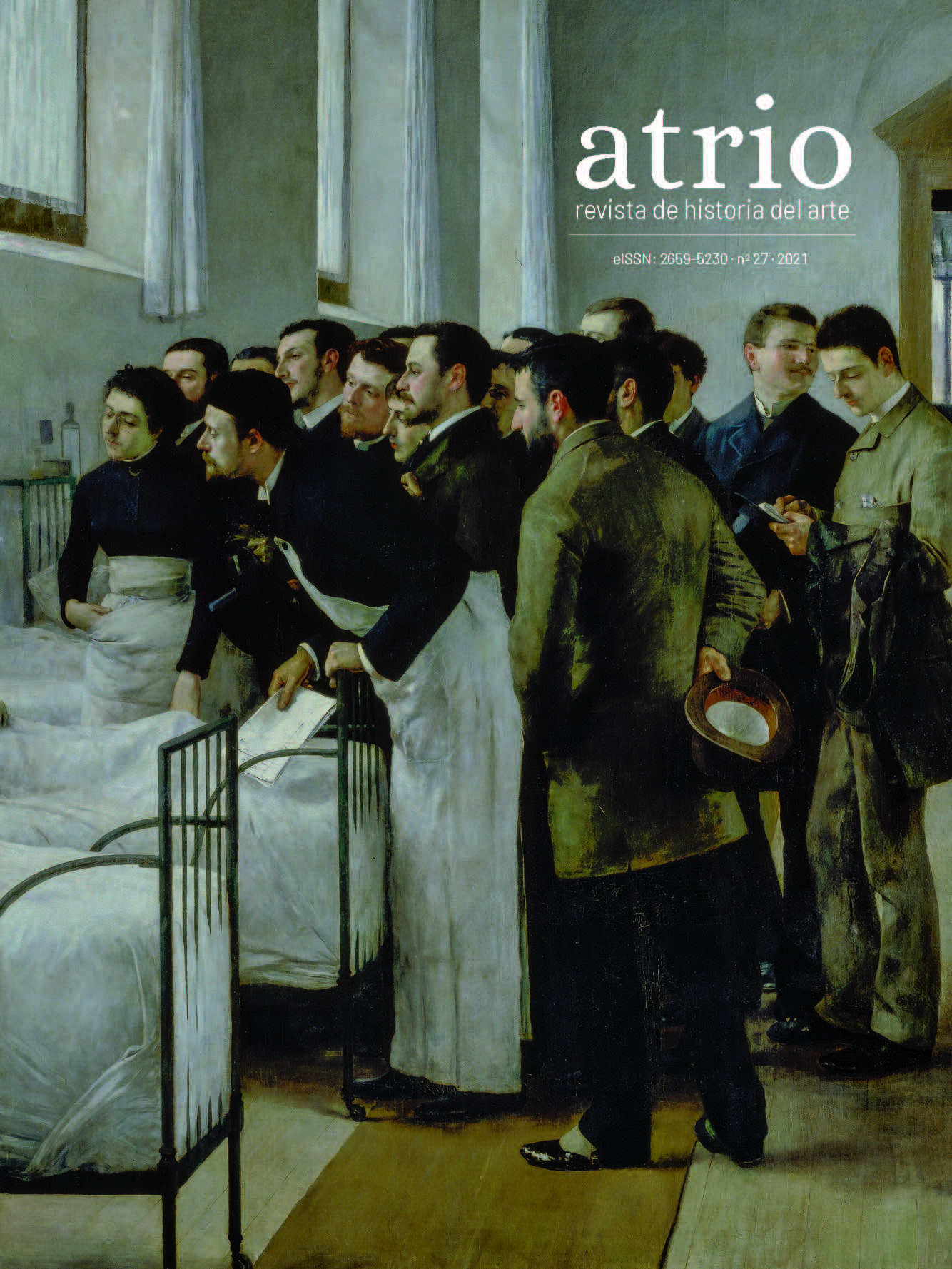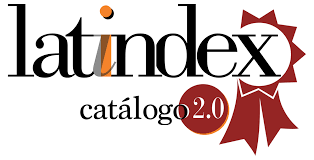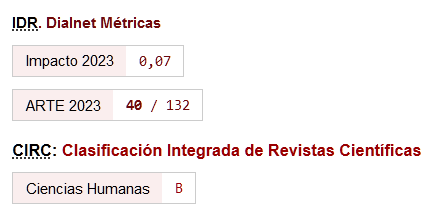Francisco y Pedro de Carriedo. Nuevas aportaciones al patronazgo indiano en Cantabria
DOI:
https://doi.org/10.46661/atrio.6183Palabras clave:
Indiano, Carriedo, Ganzo, Patronazgo artístico, Plata labrada, Siglo XVIIIResumen
Muchos fueron los indianos de origen cántabro que, a lo largo del siglo XVIII, remitieron importantes mandas de plata desde América a su tierra natal. Algunos han sido ya identificados y suficientemente estudiados, otros, sin embargo, permanecen injustamente en un total anonimato, habiéndose perdido sus nombres en el ideario o recuerdo colectivo de sus poblaciones de origen. Este artículo, a partir de documentación inédita localizada en el Archivo General de Indias, reivindica las figuras de don Francisco y don Pedro de Carriedo, ambos naturales de la población de Ganzo (Torrelavega), donde protagonizaron una relevante labor filantrópica, al remitir importantes sumas de dinero para financiar distintos proyectos tanto de carácter civil como eclesiástico, junto a dos cuantiosos legados de plata labrada para su parroquia de bautismo.
Descargas
Citas
Fuentes documentales
Archivo General de Indias (AGI). Sevilla. Fondos: Casa de la Contratación: Registros de venida; Casa de la Contratación: Autos sobre bienes de difuntos; Gobierno: Audiencia de Filipinas; Gobierno: Indiferente General; Escribanía de Cámara de Justicia.
Archivo Histórico Nacional (AHN). Madrid. Fondos: O.M. Expedientillos; Ultramar.
Fuentes bibliográficas
Calero Ruiz, Clementina, Carlos Javier Castro Brunetto, y Carmen González Chávez. Luces y sombras en el siglo ilustrado. La cultura canaria del setecientos. T. IV de Historia Cultural del Arte en Canarias. Gobierno de Canarias, 2008.
Campuzano Ruiz, Enrique. Arte colonial en Cantabria. Santillana del Mar: Fundación Santillana, 1988.
Cura, Ángel del. Breve historia del Convento-Santuario de Ntra. Sra. de las Caldas de Besaya. Santander, 2005.
Gutiérrez Gutiérrez, Carmen. “La enseñanza en Torrelavega durante el siglo XVIII.” En Torrelavega. Tres siglos de Historia: análisis de un crecimiento desequilibrado, editado por Miguel Ángel Sánchez Gómez, 81-104. Santander: Universidad de Cantabria; Ayuntamiento de Torrelavega, 1995.
Guzmán Pérez, Moisés. “Arquitectos, patrones y obras materiales en Valladolid de Michoacán. Siglos XVI-XVII.” Tempus, revista de Historia de la Facultad de Filosofía y Letras UNAM 2 (1993-1994): 58-81.
Hernández, Luis. “Los artífices de la sillería.” En Guadalupe, arte y liturgia: la sillería de coro de la colegiata, coordinado por Nelly Sigaut, 267-281. Zamora: El Colegio de Michoacán; Museo de la Basílica de Guadalupe, 2006.
Herrero Domingo, Verónica. “Los Marfiles Hispano-Filipinos en el Museo Diocesano de Santillana del Mar.” Clavis, no. 6 (2013): 1-15.
Madoz, Pascual. Diccionario geográfico-estadístico-histórico de España y sus posesiones de Ultramar. T. I-XVI. Madrid: Est. Tipográfico-literario Universal, 1806-1870.
Marichal, Carlos y Johanna Von Grafenstein, coords. El secreto del imperio español: los situados coloniales en el siglo XVIII. México: El Colegio de México; Instituto de Investigaciones Dr. José María Luis Mora, 2012.
Mas y Otzet, Francisco de. Carriedo y sus obras. Memoria de las obras pías de los pobres y del agua instituidas por el insigne patricio don Francisco Carriedo y Peredo y crónica de los festejos que el excelentísimo Ayuntamiento de la M.N. y S.L. de la ciudad de Manila en unión de su vecindario ha celebrado para conmemorar la inauguración de la primera fuente de aguas potables. Manila: Est. tip. de Ramírez y Giraudier, 1882.
Mayoralgo y Lodo, José Miguel de. Antecedentes de la emancipación: el Reino de Nueva España en el Registro de la Real Estampilla (1759-1798). México: Universidad Nacional Autónoma de México; Instituto de Investigaciones Históricas, 2014. https://www.historicas.unam.mx/publicaciones/publicadigital/libros/realestampilla/000a_intro.html.
Rivera Cambas, Manuel. Méjico pintoresco, artístico y monumental. T. III. México: Imprenta de la Reforma Perpetua, 1883.
Sánchez Gómez, Miguel Ángel. “Economía, sociedad y política en Torrelavega durante el siglo XVIII.” En Torrelavega. Tres siglos de Historia: análisis de un crecimiento desequilibrado, 25-79. Santander: Universidad de Cantabria; Ayuntamiento de Torrelavega, 1995.
Yasumura, Naoki. “Justicia y sociedad rural en Michoacán durante la época colonial.” Estudios Michoacanos, VI, 6 (1995): 139-186.
Publicado
Cómo citar
Número
Sección
Licencia
Derechos de autor 2021 José María Sánchez-Cortegana

Esta obra está bajo una licencia internacional Creative Commons Atribución-NoComercial-CompartirIgual 4.0.
Los autores/as que publican en Atrio. Revista de historia del arte están de acuerdo con los siguientes términos:
- Los autores/as conservan los derechos de autor y garantizan a la revista el derecho de ser la primera publicación del trabajo al igual que licenciado bajo una licencia de Creative Commons Attribution-NonCommercial-ShareAlike 4.0 International License que permite a otros compartir el trabajo con un reconocimiento de la autoría de este y la publicación inicial en esta revista.
- El autor/a o cedente del material que se entrega para su publicación autoriza a la revista para que publique, sin obligación alguna (económica o de otra naturaleza), el contenido del referido manual tanto en formato papel, como en digital, así como en cualquier otro medio. Esta cesión de uso del material entregado comprende todos los derechos necesarios para la publicación del material en la revista. Quedan garantizados, simultáneamente, los derechos morales del autor
- El autor/a o cedente es plenamente consciente y está de acuerdo con que todos o cualesquiera de los contenidos proporcionados, formarán una obra cuyo uso se cede a la revista para su publicación total o parcial.
- El autor/a o cedente garantiza ser el titular de los derechos de Propiedad Intelectual sobre los contenidos proporcionados, es decir, sobre el propio texto e imágenes/fotografías/obras fotográficas que se incorporan en su artículo.
- El autor/a o cedente asegura y garantiza: (i) que todo el material enviado a la revista cumple con las disposiciones legales aplicables; (ii) que la utilización de cualquier material protegido por derechos de autor y derechos personales en la concepción del material se encuentra regularizada; (iii) que obtuvo las licencias de derechos, permisos y autorizaciones necesarias para la ejecución del material, inclusive los derechos de imagen, si fueran aplicables; y (iv) que el material no viola derechos de terceros, incluyendo, sin limitarse a estos, los derechos de autor y derechos de las personas.
- El autor/a o cedente, exime a la revista de toda y cualquier responsabilidad con relación a la violación de derechos de autor, comprometiéndose a emplear todos sus esfuerzos para auxiliar a la revista en la defensa de cualquier acusación, medidas extrajudiciales y/o judiciales. Asimismo, asume el abono a la revista de cualquier cantidad o indemnización que esta tenga que abonar a terceros por el incumplimiento de estas obligaciones, ya sea por decisión judicial, arbitral y/o administrativa.











